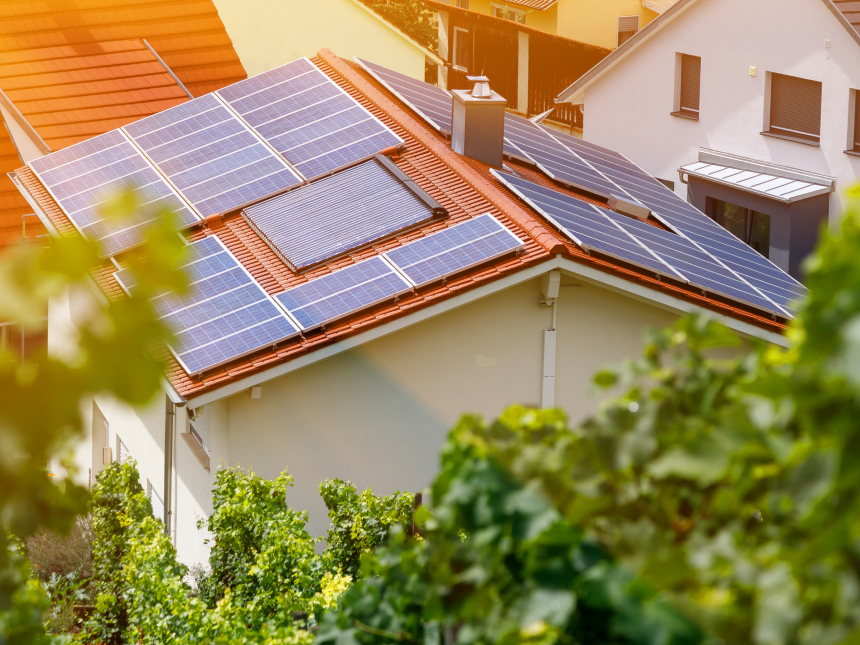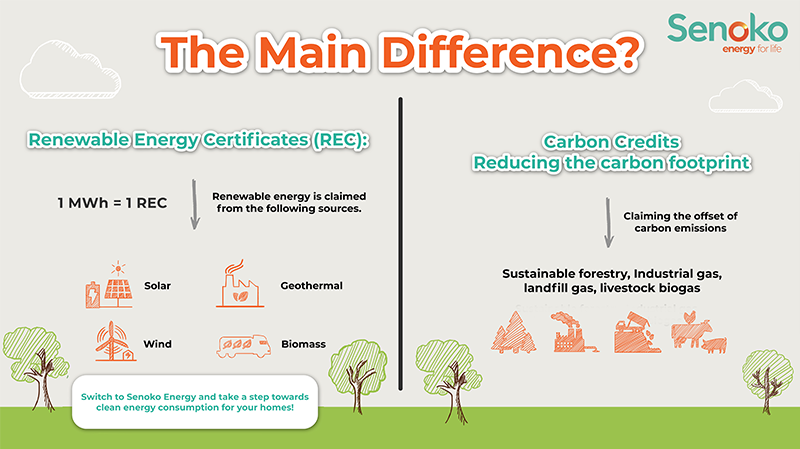
Find out more about the LifeGreen24 plan, REC, and carbon credits.
GA refer to the environmentally friendly characteristics and benefits associated with our energy products and services. These attributes may include renewable energy resources, reduced carbon emissions, energy efficiency, sustainability practices, and initiatives aimed at promoting a greener and more sustainable future.
In this context, think of Green Attributes as currency. The monetary value to the earth and the economy, of your smart decision to switch to energy powered by solar panels.
Senoko Energy will convert your GA to RECs that are sold, on your behalf, to businesses looking to off-set their carbon footprint. This way, these businesses can ensure that a portion of the electricity supplied to their customers comes from renewable sources, even if it is not physically delivered directly to each customer's location.
It's a Circle of Green that starts with you. A positive chain reaction that you ignite. Want to make an impact and earn money? Here's how:
TIGR stands for Tradable Instrument for Global Renewables. It's as a global registry, managed by APX in the USA, that authenticates that you generate clean energy and gives you a unique serial number.
Renewable Energy Certificates (RECs) are tradable green energy attributes that represent electricity generated from renewable energy generation facilities.
Electricity can be generated from renewable and non-renewable sources. Once electricity enters the power grid however, it blends with all other electricity sources so there is no way to know exactly what energy source your electricity comes from.
RECs therefore represent the clean energy attributes of renewable electricity. 1 REC represents one megawatt hour (1,000kWh) of energy generated from a clean, renewable source, such as wind, solar, hydro, or certain types of renewable biomass. Since these renewable energy resources induce no carbon as they produce energy, they can indirectly offset the carbon emission produced by the electricity consumed in your household.
There RECs are validated and issued through accredited RECs platform which are recognised by international registries.
Our LifeGreen24 plan enables your electricity consumption to be 100% carbon neutral; for every 1MWh you use under our LifeGreen24 plan, Senoko Energy promises to purchase (and retire) the equivalent number of Renewable Energy Certificates (RECs) issued by global registries such as TIGR-APX (https://apx.com/tigrs-overview) or Evident-IREC (https://evident.app) who are leading providers of infrastructure solutions to the environmental and energy markets and supporting voluntary renewable energy markets through their respective registries.
The RECs purchased (and retired) by Senoko Energy under our LifeGreen24 plan are generated by solar in Southeast Asia. The carbon emissions from your electricity consumption at home will hence be offset against renewable energy production from these renewable sources.
RECs and Carbon Credits are two different instruments.

Carbon credits refer to a tradeable permit that allows a company to emit a certain amount of carbon dioxide or equivalent greenhouse gases; this permit allows them to emit one tonne of carbon dioxide or equivalent amount of a different greenhouse gas. If a company uses fewer credits than it has (bought), it can trade and sell its credits to other parties who need it (i.e. carbon offsetting).
RECs, on the other hand, are the legal instruments used in renewable electricity markets to account for renewable electricity and its attributes whether that renewable electricity is installed on an organisation's facility or purchased from elsewhere. The owner of a REC has exclusive rights to the attributes of one megawatt-hour (MWh) of renewable electricity and may make unique claims associated with renewable electricity that generated the REC (e.g. using or being supplied with a MWh of renewable electricity, reducing the emissions footprint associated with electricity use).